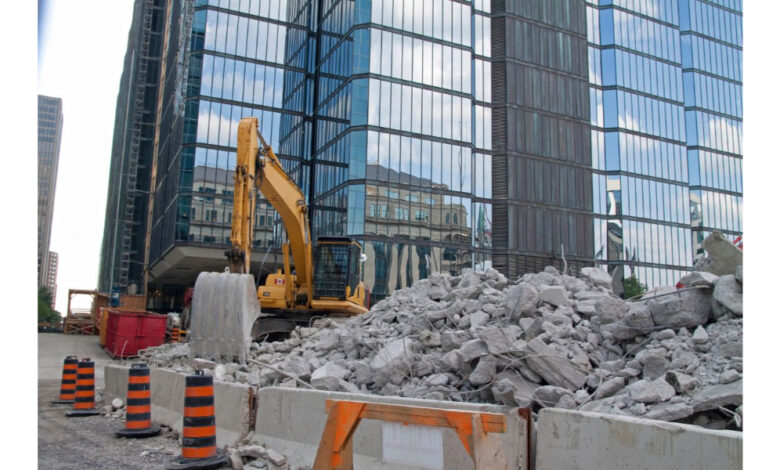How to Prepare Your Site for Controlled Demolition

So, you’ve decided it’s time to bring down that structure? Maybe it’s making way for something new, or it’s just too far gone to save. Either way, preparing for controlled demolition can feel like a daunting task. But don’t worry—you’re not in this alone. With the right steps, a clear plan, and some expert help, you’ll be ready to tackle it all with confidence.
Let’s walk through what you need to do to make sure everything goes smoothly. From safety to planning to keeping your neighbours happy, we’ve got you covered.
Take a Good, Hard Look at the Site
Before anyone touches a hammer (or explosives), you need to know what you’re dealing with. A thorough site assessment is step one. This isn’t just about checking the walls and foundation—it’s about understanding every nook and cranny of the structure. Are there hazardous materials lurking? Asbestos? Lead paint? These need to be handled carefully and safely removed before anything else happens.
Oh, and don’t forget about what’s around the building. Is there a school, a park, or a busy road nearby? You’ll want to factor in how this project could affect the area. An expert in structural dismantling can help you assess risks and map out a smart approach.
Get Your Paperwork in Order
Yeah, it’s not the fun part, but permits and approvals are non-negotiable. You’ll need to work with your local authorities to secure everything from planning permissions to noise control agreements. It might feel like a hassle, but trust us—it’s way easier to deal with this upfront than face fines or project delays later.
Be ready to share your plan for safe demolition practices, waste management, and environmental protections. It shows you’re serious about doing this right and helps build trust with the community and regulators.
Map Out the Game Plan
A solid demolition plan is your blueprint for success. This isn’t just about deciding where to start and stop—it’s about thinking ahead to avoid surprises. Whether you’re using explosives, heavy machinery, or manual techniques, every detail matters.
And let’s not forget safety. Create evacuation routes, establish no-go zones, and make sure your crew knows exactly what to do if something unexpected happens. Controlled demolition is about precision, not chaos, and having a plan gives everyone peace of mind.
Keep the Site Safe and Secure
Picture this: bright warning signs, sturdy fences, and everything locked down tight. That’s what your demolition site should look like. You don’t want curious bystanders wandering into danger zones—or workers risking injury because of poor precautions.
Make safety gear mandatory, schedule regular check-ins with your team, and always have someone with experience overseeing the work. If you’re working on a big project, like industrial demolition services, make sure you’ve got specialists on hand. Their expertise can save you time, money, and headaches.
Shut It Down—Utilities, That Is
Gas? Off. Water? Disconnected. Power? Shut down. This is a critical step you can’t skip. Any active utility lines are accidents waiting to happen. Coordinate with service providers to make sure everything’s turned off and safe before the heavy work begins.
And while you’re at it, clear the site of anything unnecessary. Extra debris or forgotten equipment just gets in the way and slows things down.
Think Green: Manage Waste and the Environment
Demolition doesn’t have to mean piles of junk headed to a landfill. With some planning, you can salvage materials through building deconstruction, recycle what’s reusable, and responsibly dispose of the rest.
Dust, noise, and emissions can also impact the area, so be proactive. Dust suppression systems and noise-reducing equipment can help keep things neighbour-friendly. A little effort goes a long way toward showing you care about the environment—and the people around you.
Be a Good Neighbour
Speaking of neighbours, don’t leave them in the dark. No one likes waking up to surprise demolition noise or worrying about their property being affected. Keep communication open and transparent. Let people know what’s happening, when, and how you’re keeping the area safe.
In some cases, nearby buildings might need extra protection. Work with engineers to ensure everything stays stable and secure during the demolition.
Double-Check Everything
Before the big moment, do one last safety inspection. Are all the protocols in place? Is the equipment working perfectly? Is the team ready to go? Walk through a checklist to make sure nothing’s been overlooked.
This final step isn’t just about ticking boxes—it’s about making sure you’re set up for success.
Bring It Down with Confidence
Controlled demolition isn’t about smashing things for the sake of it—it’s about precision, safety, and respect for the project and its surroundings. With your planning done, your team ready, and the site secure, you’ll be in a great position to see it all come together seamlessly.
And after it’s done? You’ll have a clean slate, ready for whatever’s next.

